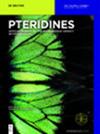Circulating concentrations of citrulline, neopterin, kynurenine, and tryptophan during chemoradiation in patients with cervical carcinoma
IF 0.9
4区 医学
Q4 BIOCHEMISTRY & MOLECULAR BIOLOGY
引用次数: 0
Abstract
Abstract The aim of this study was to investigate the changes in circulating concentrations of citrulline, neopterin, kynurenine, and tryptophan during the course of chemoradiation in patients with cervical cancer. Sixteen patients with histologically confirmed carcinoma of the uterine cervix, aged 53 ± 15 years (range 29–76 years), were included in this study. Plasma neopterin, kynurenine, and tryptophan were determined with an enzyme-linked immunosorbent assay. Plasma citrulline was measured with high-performance liquid chromatography. Compared to baseline, citrulline concentration was markedly and statistically significantly decreased at visits 2, 3, and 4, while returning to pretreatment concentrations at visit 5. A significant increase in serum neopterin concentrations was observed at visits 4 and 5. With the exception of decreased kynurenine/tryptophan ratio at visit 3, no significant changes were observed in the concentrations of kynurenine, tryptophan, and kynurenine/tryptophan ratio throughout the course of the treatment. In conclusion, present data demonstrate that citrulline concentrations decrease early and neopterin concentrations increase late during the course of chemoradiation in patients with cervical carcinoma. Citrulline represents a biomarker of intestinal toxicity in this population.宫颈癌患者放化疗期间瓜氨酸、新蝶呤、犬尿氨酸和色氨酸的循环浓度
摘要本研究旨在研究癌症患者放化疗过程中瓜氨酸、新蝶呤、犬尿氨酸和色氨酸循环浓度的变化。本研究包括16名经组织学证实的宫颈癌患者,年龄53±15岁(范围29-76岁)。用酶联免疫吸附法测定血浆新蝶呤、犬尿氨酸和色氨酸。血浆瓜氨酸采用高效液相色谱法测定。与基线相比,瓜氨酸浓度在第2次、第3次和第4次访视时显著降低,在第5次访视恢复到预处理浓度。在第4次和第5次就诊时,观察到血清新蝶呤浓度显著增加。除访视3时犬尿氨酸/色氨酸比率下降外,在整个治疗过程中,犬尿氨素、色氨酸和犬尿氨蛋白/色氨酸酯比率的浓度均未观察到显著变化。总之,目前的数据表明,在宫颈癌患者的放化疗过程中,瓜氨酸浓度早期降低,新蝶呤浓度晚期增加。瓜氨酸是该人群肠道毒性的生物标志物。
本文章由计算机程序翻译,如有差异,请以英文原文为准。
求助全文
约1分钟内获得全文
求助全文
来源期刊

Pteridines
生物-生化与分子生物学
CiteScore
1.20
自引率
25.00%
发文量
6
审稿时长
>12 weeks
期刊介绍:
Pteridines is an open acess international quarterly journal dealing with all aspects of pteridine research. Pteridines are heterocyclic fused ring compounds involved in a wide range of biological functions from the color on butterfly wings to cofactors in enzyme catalysis to essential vitamins. Of the pteridines, 5,6,7,8-tetrahydrobiopterin is the necessary cofactor of several aromatic amino acid monoxygenases, the nitric oxide synthases and glyceryl ether monoxygenase (GEMO). Neopterin plays an essential role in the immune system and is an important biomarker in laboratory medicine for diseases such as HIV, cardiovascular disease, malignant tumors, among others.
Topics:
-Neopterin, dihydroneopterin, monapterin-
Biopterin, tetrahydrobiopterin-
Folates, antifolates, riboflavin-
Phenylalanine, tyrosine, phenylketonuria, serotonin, adrenalin, noradrenalin, L-DOPA, dopamine, related biogenic amines-
Phenylalanine hydroxylase, tyrosine hydroxylase, tryptophan hydroxylase, nitric oxide synthases (iNOS), alkylglycerol monooxygenase (AGMO), dihydropterin reductase, sepiapterin reductase-
Homocysteine, mediators of inflammation, redox systems, iron.
 求助内容:
求助内容: 应助结果提醒方式:
应助结果提醒方式:


